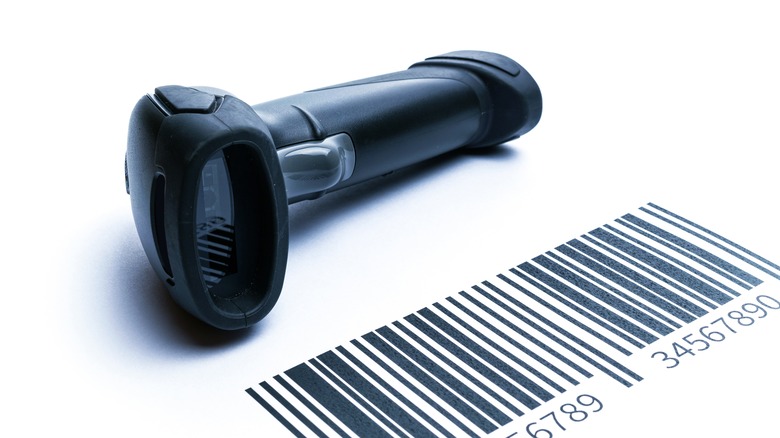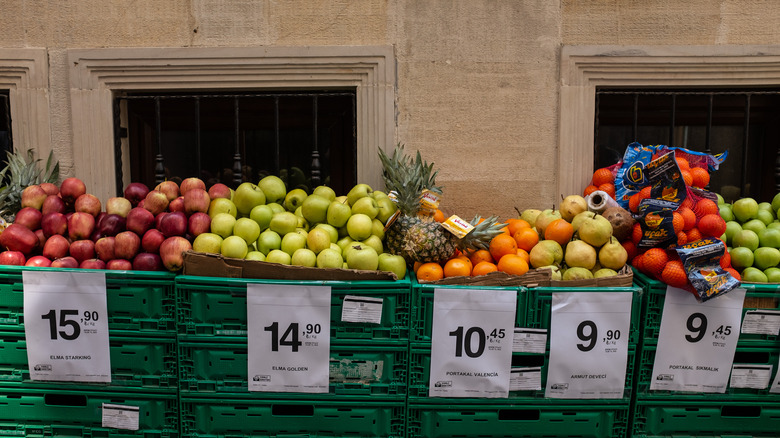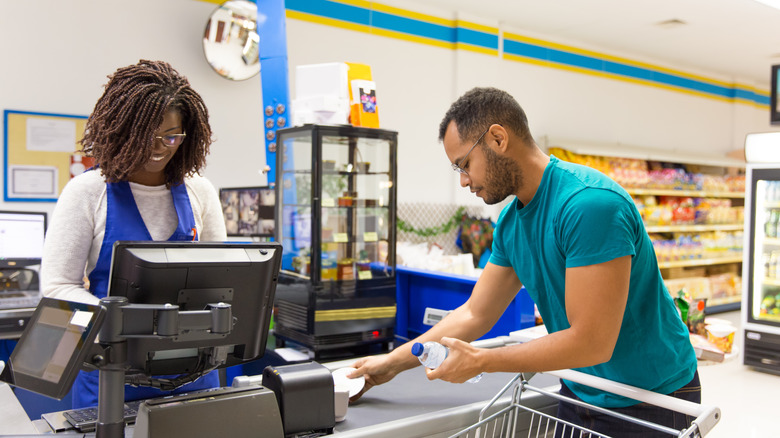Here's Why A Pack Of Gum Was Part Of Such A Historic Event
On June 26, 1974, supermarket history was made. (per Wired). A pack of Wrigley's chewing gum was the first product to be checked out using Universal Product Code, also known as UPC, but probably best known as a barcode.
Barcodes are pretty much everywhere now, used to manage everything from animals, luggage, and mail to NASA space shuttles, writes the National Inventors Hall of Fame. But they are perhaps most visually noticeable to the public in places of retail, like grocery stores. Before their invention, grocery store managers and clerks had to add individual price stickers to every product sold in the store and then key in prices one by one upon checkout. There was no way to tell exactly how much of each product was in stock unless it was counted by hand or guessed. Sounds pretty tedious, right?
Since barcodes have been ubiquitous for decades, it's easy to take them for granted. But developing them was actually no small feat. Let's explore how an idea conceived by two graduate students at Drexel University and finalized by a pack of chewing gum led us to the present-day reality in which almost every product in a shopping cart is tracked and scanned with a barcode.
From an abundance of price stickers to barcodes
Even though barcodes first hit supermarket shelves in 1974, the work to develop them began more than two decades prior, in 1948, when Drexel University graduate students Bernard Silver and Norman Joseph Woodland began work on technology that would keep track of products (via National Inventors Hall of Fame). The pair's first idea was a series of ink patterns that would glow in ultraviolet light, but it proved expensive and inefficient. Woodland next hit upon Morse code as an idea, which proved problematic — until by chance, while on a Florida beach, he wrote out dots and dashes in the sand, then extended them into a multitude of thick and thin lines (via Wired). Thus, a preliminary version of the barcode was created.
Using this system, Silver and Woodland continued to tweak their design over the next 20 years. They patented their work and sold it to electronics company Philco. Some time later, Philco sold the patent to another electronics company, RCA. By the 1970s, the companies Computer Identics and Sylvania had both invented barcode systems of their own. They were meant for factories and railroad cars, respectively, but neither of the systems worked very well. The Computer Identics barcodes, for example, could only handle two-digit numbers.
RCA tested Woodland and Silver's concept with a tool called a bull's-eye code reader because at the time, their barcode was shaped like a target. But in the end, the supermarket industry eventually settled on a laser-reader system developed by IBM.
First item ever checked out by Universal Product Code
By June 26, 1974, everything was ready for an initial launch (per Wired). The first checkout scanners were installed at a Marsh supermarket in Troy, Ohio. This store location was chosen because it was close to Dayton, home of the headquarters of NCR (National Cash Register Co.), which designed the scanners. Just after 8 a.m., Marsh employee Clyde Dawson put a 50-stick pack of Wrigley's Juicy Fruit on the new scanner, and cashier Sharon Buchanan scanned the first product with a barcode attached. This actually wasn't a random purchase. Dawson later explained that it wasn't clear at the time whether a barcode could be printed on something so small as a 50-pack of gum, but Wrigley's found a way (via Smithsonian Magazine). Although some sources have reported that the pack of gum went on display at the Smithsonian Institution's National Museum of American History, the Smithsonian says the history-making Juicy Fruit 50-pack actually went home with Dawson.
UPC codes did not spread everywhere overnight and were actually slow to be adopted. Manufacturers worried that a printed code might spoil their products or the packaging. However, as large brands began to use them, Kmart being the first, the cheaper the hardware became for others. Check-out scanners today cost just 1% of the $4,000 they did in 1974 (per Wired). Today, UPC code is used in supermarkets to check inventory and prices, as well as to track consumer preferences.


